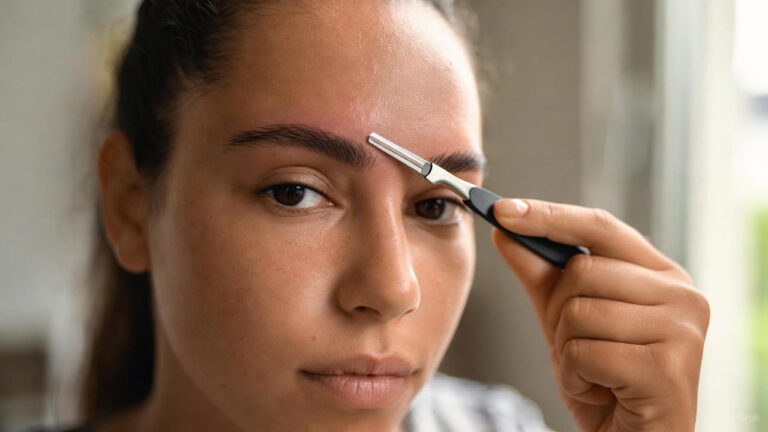Digital screens are an integral part of modern life. From smartphones to computers, our eyes are constantly exposed to blue light and prolonged screen time. This can lead to discomfort and visual fatigue. Understanding how to care for your eyes while using digital devices is crucial for maintaining eye health.
Understanding Digital Eye Strain
Digital eye strain, also known as computer vision syndrome, refers to a range of vision-related problems that result from prolonged screen use. Symptoms include dryness, irritation, blurred vision, and headaches. The discomfort can be exacerbated by improper lighting, poor posture, and the blue light emitted by screens.
Common Symptoms
- Dry Eyes: Prolonged staring at screens reduces the frequency of blinking, leading to dryness.
- Blurred Vision: Extended focus on screens can strain the eye muscles, causing temporary blurriness.
- Headaches: Tension in the neck and shoulders from poor posture can lead to headaches.
- Eye Fatigue: Continuous screen time can tire the eye muscles, making it difficult to focus.
The 20-20-20 Rule
A simple yet effective way to reduce digital eye strain is the 20-20-20 rule. Every 20 minutes, take a 20-second break to look at something 20 feet away. This helps relax the eye muscles and reduce fatigue. Implementing this rule can significantly alleviate discomfort during long screen sessions.
Optimize Your Work Environment
Creating a comfortable work environment can greatly minimize eye strain. Here are some adjustments you can make:
1. Adjust Screen Brightness
Ensure your screen brightness matches the ambient light in your room. A screen that is too bright or too dim can strain your eyes.
2. Use Anti-Glare Screens
Anti-glare filters can reduce reflections from your screen. This makes it easier on your eyes, especially in bright conditions.
3. Position Your Screen Correctly
Your screen should be about an arm’s length away and slightly below eye level. This position helps reduce strain on your neck and eyes.
4. Control Lighting
Avoid harsh overhead lighting. Use soft, indirect lighting to minimize glare on your screen. Consider using desk lamps with adjustable brightness.
Regular Eye Exams
Regular visits to an eye care professional are vital. Comprehensive eye exams can detect issues early and ensure your vision is optimal. Your eye doctor can also recommend specific lenses or protective coatings to minimize blue light exposure.
Blink More Often
Consciously blinking more often can help alleviate dry eyes. When focused on screens, we tend to blink less, leading to dryness and discomfort. Taking a moment to blink frequently can help keep your eyes moist and comfortable.
Hydrate and Maintain a Balanced Diet
Staying hydrated is essential for eye health. Drink plenty of water throughout the day to keep your eyes lubricated. A balanced diet rich in vitamins A, C, and E, as well as omega-3 fatty acids, can support eye health. Foods like carrots, spinach, fish, and nuts are excellent choices.
Consider Blue Light Filters
Many devices now come with built-in blue light filters. These can help reduce blue light exposure, which is known to disrupt sleep and cause eye strain. You can also use screen protectors that filter blue light.
Eye Exercises
Using simple eye exercises into your routine can help reduce strain. Here are a few effective exercises:
1. Eye Rolling
Roll your eyes in a circular motion to help relieve tension. Do this several times in both clockwise and counterclockwise directions.
2. Focus Change
Hold a finger a few inches away from your face and focus on it. Then, shift your focus to something in the distance. Repeat this several times.
3. Palming
Rub your palms together to generate heat, then gently cup them over your closed eyes. This helps relax the eye muscles and relieve strain.
Conclusion
Caring for your eyes in a digital world is essential for maintaining comfort and health. By implementing the 20-20-20 rule, optimizing your workspace, and staying hydrated, you can significantly reduce eye strain and fatigue. Regular eye exams and mindful screen habits will contribute to better eye health in the long run.
Frequently Asked Questions (FAQs)
1. What is digital eye strain?
Digital eye strain refers to discomfort and vision-related problems resulting from prolonged screen use.
2. How can I tell if I have digital eye strain?
Symptoms include dry eyes, blurred vision, headaches, and general eye fatigue after long periods of screen time.
3. What is the 20-20-20 rule?
The 20-20-20 rule suggests taking a 20-second break every 20 minutes to look at something 20 feet away to reduce eye strain.
4. How often should I have my eyes examined?
It’s recommended to have a comprehensive eye exam every one to two years, or more frequently if you experience discomfort.
5. Do blue light filters really help?
Yes, blue light filters can help reduce exposure to blue light, which may minimize eye strain and improve sleep quality.
6. What types of foods are good for eye health?
Foods rich in vitamins A, C, and E, as well as omega-3 fatty acids, are beneficial for eye health. Examples include carrots, spinach, fish, and nuts.



